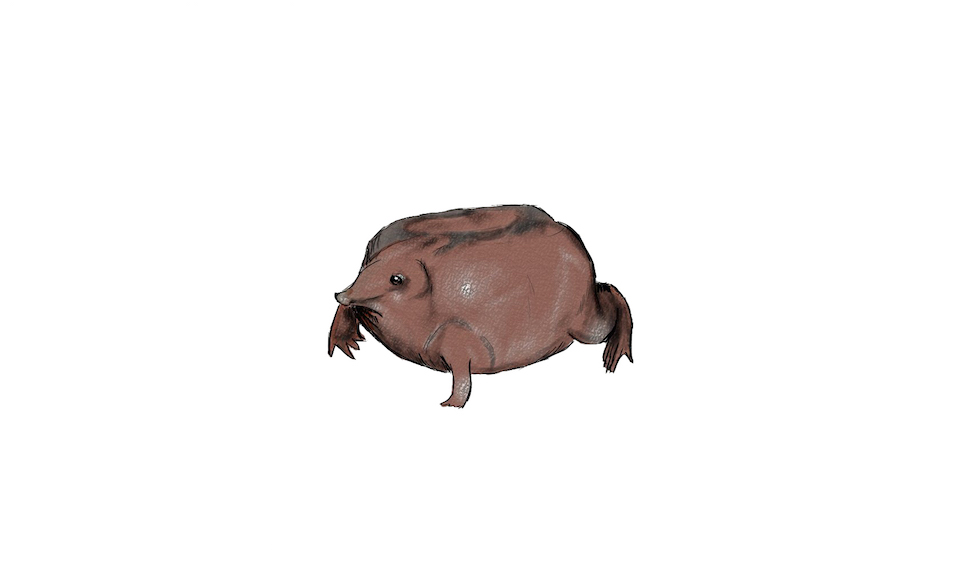To most, a photo of a large, hairy spider, or deep-sea predator would more likely provoke revulsion than empathy. It is difficult to call reptiles, plants, microorganisms, and other similar critters “cute” or “relatable” by normal standards. Their photos are not generally chosen to be the faces of large conservation campaigns run by organizations like the World Wildlife Fund (WWF) and People for the Ethical Treatment of Animals (PETA).
Let’s face it: not all creatures’ appearances generate the same kind of emotional attachment as that of a fuzzy polar bear, especially if that polar bear is precariously positioned on a melting glacier. The problem with this bias against ugly endangered animals is that it deems them less deserving of protection than their cute and cuddly counterparts. The only way to tackle this stigma is by learning these animals’ stories — five of which are presented here.
We begin with the bulbous, slimy, purple pignose frog (Nasikabatrachus sahyadrensis). Native to India, particularly Kerala’s Cardamom Hills, this frog lives underground in the forest, and only surfaces during mating seasons, where it breeds in freshwater. Unfortunately, due to a rampant increase in farming for coffee, cardamom, ginger, and other culinary items, the amount of space available to these frogs is quickly decreasing. In fact, these frogs are known to reside in only five remaining habitats. Even within these spaces, the frogs are threatened due to anthropogenic sources of habitat destruction.

Next, admire the beady-eyed, oddly proportioned Singapore freshwater crab (Johora singaporensis). Native to its island namesake, the freshwater crab prefers to spend its time under rocks and piles of leaves in freshwater habitats. A boom in technological advancement and modernization efforts in Singapore have consequently led to large increases in acid rain and pollution. This, in turn, reduces the overall quality and safety of the water, thereby depleting the crab’s habitat.

We now turn our attention to the amorphous giant softshell turtle (Rafetus swinhoei). The International Union for Conservation of Nature (IUCN) has classified this species as critically endangered, with only four of these turtles left in its recorded population. The giant softshell turtle is native to China, where it is considered culturally valuable. A surge in pollution due to heavy industrialization, combined with excessive hunting, for human consumption and trophy keeping, has not only depleted the species’ numbers, but also – you guessed it – its habitat.

The more garish of the two remaining examples is the gooty tarantula (Poecilotheria metallica). This species of tarantula is native to India, where it makes a home for itself in the various corners of old-growth forests. Sadly, these forests are undergoing escalating amounts of logging for human use, and the human colonies surrounding the forests also exploit the natural resources that are available. IUCN has listed the gooty tarantula as critically endangered, because the destruction humans inflict on its natural habitat will inevitably cause a dramatic reduction in the creatures’ population.

Our final example is the Indian Gharial (Gavialis gangeticus), which is also listed as critically endangered by the IUCN. The Gharial comes from India; there, its main habitat includes the tributaries of the Ganges River. Gharials have been hunted for decades as trophies, and for human use in food and medicine. Furthermore, an increase in manmade infrastructure, including dams and agricultural systems, also increases the risk that Gharials will be killed, as their ability to find safe sites for nesting and grouping is compromised.

The dismal reality is that caring about biodiversity and endangerment issues involves far more than donating a few dollars a month to fulfill selfish altruism quotas, and constraining a few popularly known species to life behind bars in zoos. Appreciating biodiversity requires an understanding of the variety of roles that other non-human species on earth perform: nutrient recycling, oxygen generation, carbon dioxide storage, and pest control, to name a few.
The plight of these not-so-pretty creatures is real and concerning, yet, it produces very little response. The loss of even one species affects entire ecosystems; delicate ecological relationships therefore will become gradually more imbalanced. This will take a toll on our composition of the biosphere that surrounds us, reducing our capacity for continued coexistence with other living forms. All species deserve protection, not just the cute ones.
